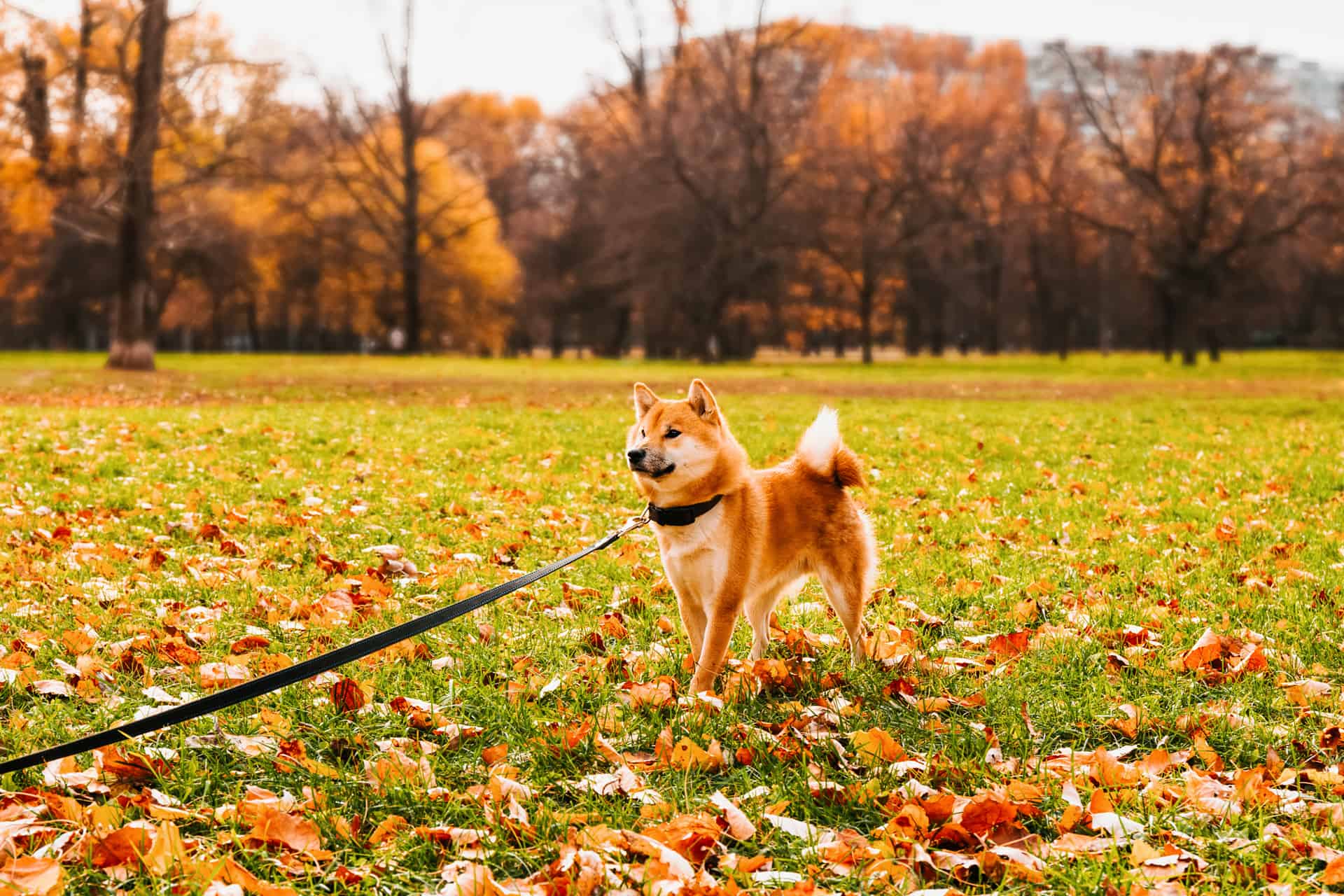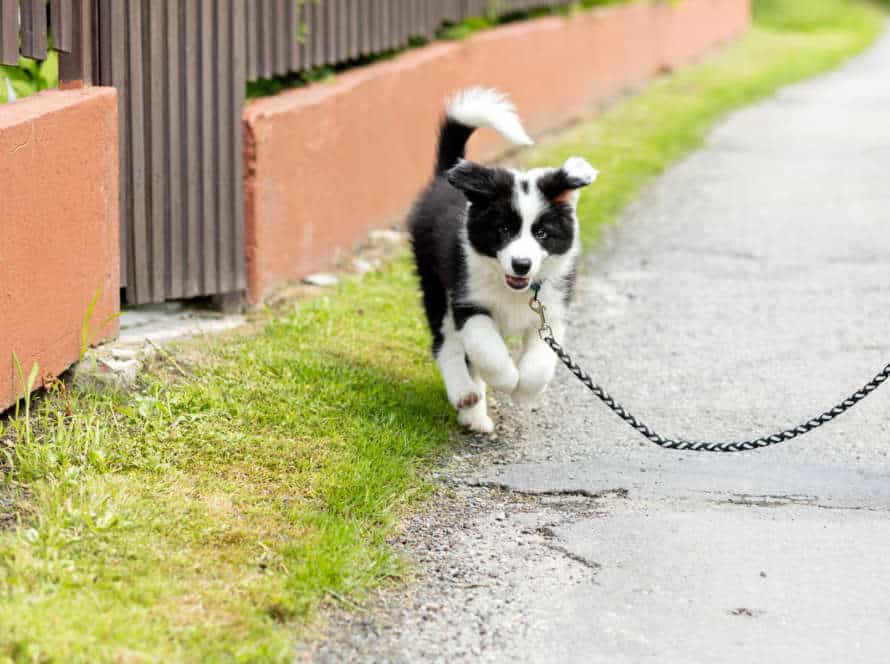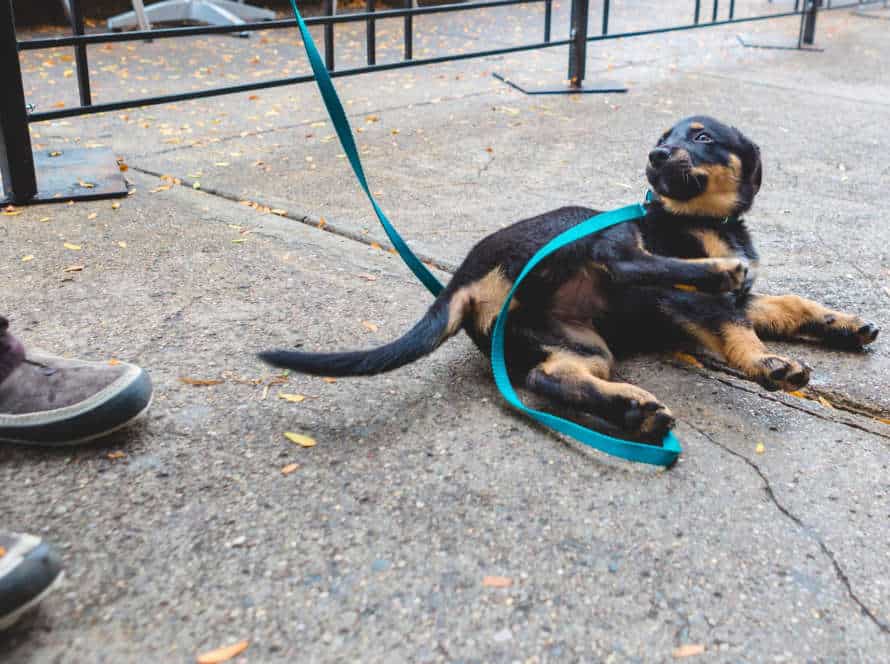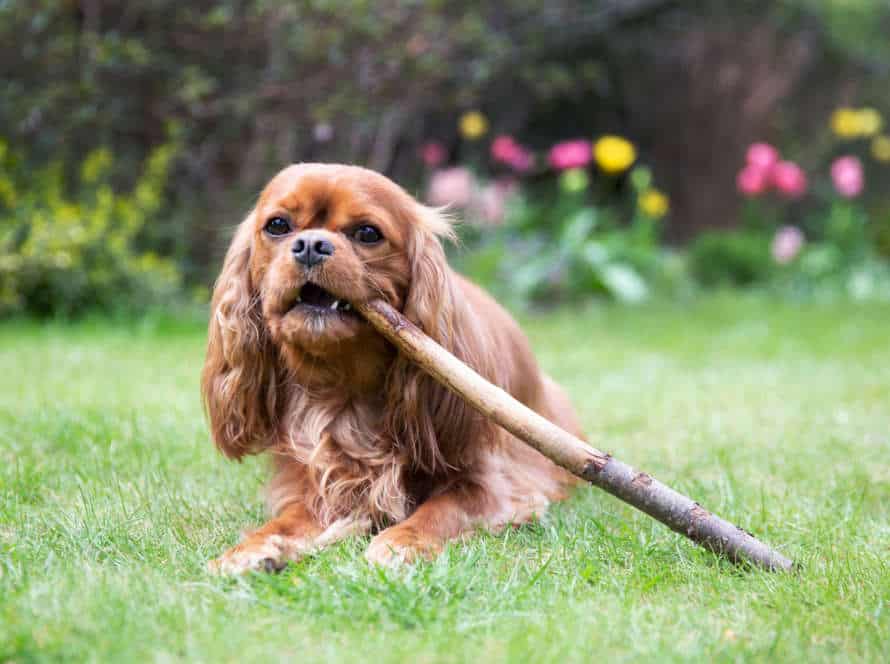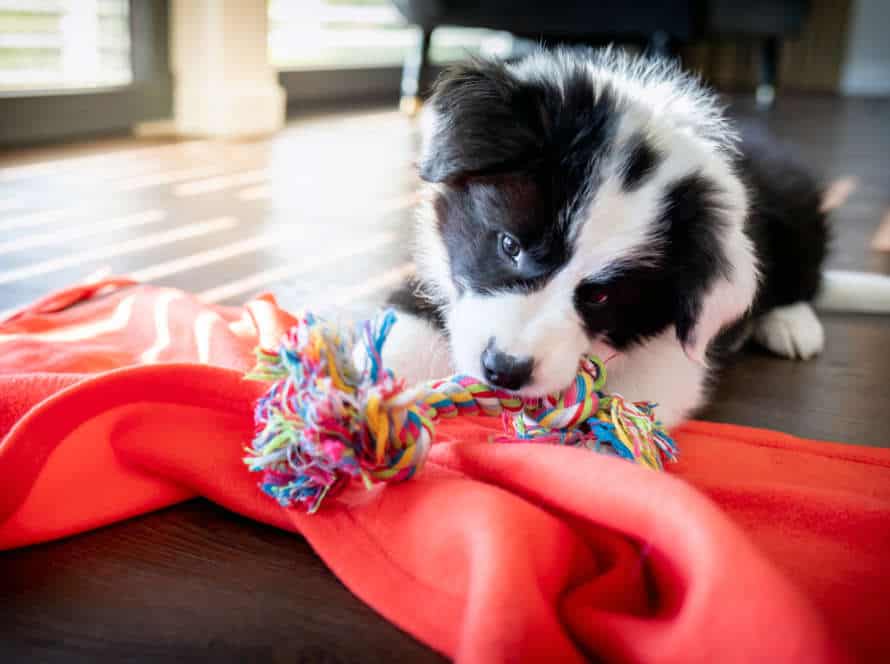Why Regular Leash and Collar Maintenance is Important
Responsible pet owners need to regularly inspect their pet’s leash and collar. This will protect both the pet and the owner. Let’s learn why it’s important, and how to do it properly.
Prevent Accidents and Escapes
Regular maintenance of your dog’s leash and collar is a must. Neglecting it can be dangerous for your pet. Here are some reasons why it is important:
- Wear and tear. Everyday use can cause wear and tear which makes the leash and collar weaker. This can lead to it breaking suddenly, putting your pet in danger.
- Comfort and fit. Your dog’s collar may become too tight or too loose. Regular adjustments and replacements can keep your pet comfortable and secure.
- Visibility. Clean and visible leashes and collars can help spot your pet quickly by drivers and pedestrians.
By inspecting and maintaining regularly, you can keep your pet safe and prevent any accidents during walks.
Pro tip: Set a calendar reminder for monthly maintenance and replacement of your dog’s leash and collar.
Increase Longevity of Equipment
Regular maintenance of your pet’s leash and collar is essential! Ignoring maintenance can cause wear and tear, damage, and danger. Here’s why maintenance matters:
- Safety – Broken or worn-out leashes or collars can lead to accidents and harm your pet.
- Hygiene – Cleaning and washing leashes and collars can stop bacteria and disease.
- Cost-effective – Keeping your leash and collar in top shape saves money.
- Comfort – Regular maintenance ensures your pet’s leash and collar fit properly.
By cleaning, inspecting, and replacing worn-out items, you can keep your pet safe and comfortable while prolonging the life of your equipment.
Keep Your Dog Comfortable and Happy
It’s very important to maintain your pup’s leash and collar regularly. Here’s why:
- Safety: Check and replace worn out leashes and collars, or your dog may escape, run into traffic, or get lost.
- Comfort: Make sure the collar and leash fit properly. This will keep your pooch happy and comfy.
- Hygiene: Leashes and collars can get dirty, carry bacteria, and other nasties. Clean and maintain them to prevent skin irritations and infections.
By maintaining your dog’s collar and leash, you’ll keep your pup safe and comfy, allowing you to have lots of fun together outdoors.
How to Properly Maintain Dog Leashes and Collars
Leashes and collars for your pup are very important when out walking. They help keep your pup safe and comfortable. Knowing how to clean and maintain these items is key. This article will discuss the importance of maintaining leashes and collars. Plus, it will cover the best practices for doing so.
Cleaning Techniques for Different Materials
It’s essential to clean dog leashes and collars regularly. Different materials require different cleaning techniques, though. Here are some tips:
- Nylon: Wash by hand or in the washing machine with mild detergent and hang to air dry.
- Leather: Use a damp cloth to remove dirt, then a leather conditioner to moisturize and protect.
- Chain: Clean with warm soapy water and dry thoroughly to prevent rusting.
- Rope: Soak in warm soapy water, scrub with a brush, then hang to air dry.
Follow these cleaning techniques for safe and good condition leashes and collars. Pro Tip: Check for any wear and tear before use and replace if needed.
Inspecting for Wear and Tear
Inspecting dog leashes and collars is key to keep both dogs and their owners safe. Regular maintenance of these accessories can prevent accidents and avoid hurt.
Here are some tips:
- Check the condition regularly for signs of wear and tear. Look for frayed areas, cracks, and damage that could weaken the leash or collar.
- Replace worn or damaged leashes and collars immediately. Don’t wait for them to break.
- Clean your dog’s collar and leash often. Use mild soap and warm water.
- Store leashes and collars in a dry, cool place.
By following these tips, you can help keep your dog safe and healthy during walks.
Replacing and Upgrading
It is essential to regularly replace and upgrade your pup’s leashes and collars. Here are some tips for proper maintenance:
- Check the gear often for wear and tear, like frayed edges or broken clasps.
- Wash fabric leashes and collars on a gentle cycle with mild detergent. Then dry them in the sun or on low heat.
- Store the leashes and collars in a dry and clean place, away from direct sunlight and moisture.
- Think about upgrading to a more resilient material like leather or nylon, especially as your pup gets bigger and stronger.
- Make sure the collar fits comfortably and securely. Don’t use choke or prong collars- they can hurt your dog’s neck.
Common Leash and Collar Mistakes and How to Avoid Them
Maintaining your pet’s leash and collar is important for their safety. Many pet owners, however, make mistakes with caring for these items. Knowing and avoiding these errors means your pet can enjoy outdoor life safely and comfortably. So, make sure to stay vigilant!
Improper Sizing and Fit
Incorrectly-sized or fitting leashes and collars can be risky for your pet. It’s crucial to select the proper size and fit for your pet’s collar and leash to guarantee their safety and comfort.
Here are some common errors to dodge:
- Purchasing a collar that is too small or too big can lead to pain, choking, or wounds. Buying a leash that is either too long or too short can reduce your control over your pet and create tripping risks.
- Not changing the collar or leash as your pet grows or loses weight can cause the wrong fit, discomfort, or too tight/loose fitting.
- Not inspecting the collar or leash for signs of wear or injury can result in malfunctioning or breakage, and put your pet in danger.
- Remember to do regular maintenance on their leashes and collars, like cleaning and storing properly, so they last longer and are secure.
Keep in mind to always prioritize your pet’s safety and comfort when selecting and caring for their collars and leashes.
Pro Tip: Measure your pet’s neck size regularly and alter their collar according to the measurements for an ideal fit.
Neglecting Regular Cleaning and Maintenance
Neglecting to clean and maintain your pup’s leash and collar can cause dangers and reduce durability. Here’s why regular maintenance is important.
-
Firstly, dirt, bacteria, and grime can build up on the leash and collar if not regularly cleaned, exposing your pet to germs and infections.
-
Secondly, regular maintenance keeps the leash and collar in good condition, promoting safety.
-
Thirdly, it increases the lifespan of the leash and collar, avoiding the need for frequent replacements.
To stay safe and save money, clean your pet’s leash and collar regularly, check for wear and tear, and replace them when necessary. Regular maintenance helps keep your pet safe and their leash and collar lasting longer.
Using Low-Quality or Damaged Equipment
Using low-quality, old or damaged equipment for leashes and collars is a mistake. It can put your pet’s safety and well-being at risk.
Here are some hazards and tips to avoid them:
- Low-quality gear could break or snap and cause your pet to run away or get loose. Get gear from trusted brands and inspect it often.
- Old gear might become stiff or brittle and cause pain when worn. Replace it as needed.
- Damaged equipment can lead to choking, lacerations, or other injuries. Check for damage and replace if any issues arise.
As a pet owner, it’s important to keep your animal safe and comfortable. Invest in quality gear and maintain it. This will help keep your pet happy and healthy.
Best Practices for Safe and Effective Use of Leashes and Collars
Leashes and collars are vital for pet and owner safety. Keeping them in good condition is essential. Regular maintenance can not only help keep everyone safe, but can also prolong the life of the products. Here’s the best way to use leashes and collars properly and safely.
Importance of Supervision and Training
Supervising and teaching your pet are essential for safe and successful use of leashes and collars. These tools are vital for keeping your furry one secure – but can be hazardous if not utilized properly. Here are some tips to ensure a secure and successful experience when using leashes and collars:
- Train and supervise your pet’s use of collars and leashes.
- Choose the right type for your pet’s size, breed, and behavior.
- Examine regularly for any damage and replace if necessary.
- Make sure your pet’s collar or leash fits correctly.
- Be mindful of weather and temperature when using these tools. Avoid using metal collars in extreme heat or cold.
With proper supervision, training, and maintenance, leashes and collars will keep your pet safe.
Pro-tip: Always choose top-notch collars and leashes – and never leave your pet unsupervised with them on!
Proper Use of Leash and Collar Attachments
Leash and collar attachments have to be chosen and maintained correctly, for safety and effectiveness when controlling your dog. Here are some tips:
- Get a strong leash and collar that fits your dog’s size, weight, and temperament.
- The collar must fit well, neither too tight nor too loose.
- Attach the leash to the D-ring or O-ring with a secure knot or clip.
- Check the collar buckle, snap hook, and leash clip regularly for any wear or damage and replace them if needed.
- Clean the collar and leash to prevent bad odors and bacteria.
Using the right attachments and keeping them in good condition helps you control your dog while reinforcing good behavior. Pro Tip: Consult a professional trainer or vet for the best leash and collar setup for your pup!
Alternatives to Traditional Collars and Leashes
Collars and leashes are a common way to keep your pup safe on walks. But, there are other methods you can use which might be more comfortable for your doggo!
- Harnesses – These spread the pressure of the leash out more evenly over the body. Ideal for dogs with neck or throat problems or those who pull a lot.
- Head collars – Sit over the nose and neck and provide better control, reducing pulling.
- Slip leads – These are a mix of a leash and collar, great for quick walks or ones that tend to slip out of their collars.
When using traditional collars and leashes, remember to use the correct size, never leave them unattended, and check regularly for signs of wear or damage.
Pro tip: Reward your pup for good behavior on walks with treats, praise, or toys! This will help reinforce positive habits.
Where to Find High-Quality Leashes and Collars
Ensure safety for your pet! Where to find high-quality leashes and collars? Check out this article. It provides an overview of some of the best places to find reliable and well-made leashes and collars. Get the scoop now!
Brands That Prioritize Safety and Durability
When it comes to pet leashes and collars, safety and durability should be the main focus. Here are three brands that prioritize these factors:
- Lupine offers a lifetime warranty on their products made of strong and high-quality materials.
- Ruffwear has safety-minded features like reflective stitching and crash-tested buckles. Plus, they have a repair and replacement program.
- PetSafe leashes and collars are often made with heavy-duty materials. They can withstand rough play and extreme weather.
Remember to inspect and maintain your pet’s leash and collar. Check for signs of wear and tear and replace them when needed.
Factors to Consider When Choosing Equipment
When selecting a leash and collar for your pet, there are some factors to consider.
- Material: Pick something durable and comfy that won’t harm your pet. Popular options include leather, nylon, and cotton.
- Size: Measure your pet’s neck/chest to get the right size of collar. It should fit snugly, but two fingers should fit between the collar and your pet’s neck.
- Style: Select a style that suits your pet’s shape/personality. Think flat collars, martingale collars, and harnesses.
- Quality: Look for strong leashes/collars. Sturdy hardware, strong stitching, and reinforced stress points are important.
- Maintenance: Regular maintenance is essential for your pet’s safety. Check for wear and tear, loose stitching, and broken hardware, and replace them as needed. Clean your pet’s leashes/collars regularly too.
Pro tip: Invest in quality leashes/collars for long-term savings and pet safety.
Tips for Shopping on a Budget
Budget-Friendly Shopping Tips and Leash and Collar Care for Pet Safety
For shopping on a budget, here are some pointers:
- Make a plan and budget in advance.
- Look for discounts, deals, and coupon codes online or in-store.
- Get generic or store-brand items instead of name brands.
- Use loyalty programs, reward points, and cashback offers.
When it comes to leash and collar maintenance for your pet:
- Clean them regularly with soap, water, or a pet-safe cleaner.
- Check for wear and tear and replace if needed.
- Store them in a safe and dry place.
- Put ID tags with your pet’s name, your name, address, and phone number on the collar in case they get lost.
Pro tip: Budget shopping does not have to mean low-quality items. With discounts, coupons, generic products, and loyalty programs, you can get great leashes and collars for your pet while saving money.
Frequently Asked Questions
1. Why is it important to regularly maintain your pet’s leash and collar?
Keeping your pet’s leash and collar in good condition ensures that they are reliable and safe for your pet to wear. Over time, collars can become worn out and leashes can fray, leading to potential dangers such as escape or injury.
2. How should I properly maintain my pet’s leash and collar?
You should regularly inspect your pet’s leash and collar for any signs of wear and tear. If you notice any damage, it’s important to replace the item immediately. Additionally, you should clean your pet’s leash and collar regularly to prevent dirt and bacteria from building up.
3. Can a damaged leash or collar harm my pet?
Yes, a damaged leash or collar can pose serious risks to your pet’s safety. If a collar is too loose or too tight, your pet may be able to escape or be in discomfort. Additionally, if a leash is frayed or worn, it may break during a walk and put your pet in danger.
4. How often should I replace my pet’s leash and collar?
It’s recommended to replace your pet’s leash and collar every 6-12 months, depending on how often they are used and how much wear and tear they experience. However, if you notice any signs of damage or if your pet has outgrown their collar, you should replace them immediately.
5. What are some signs that my pet’s leash or collar needs to be replaced?
If you notice any signs of wear and tear, such as frayed edges, holes, or cracks, it’s time to replace the leash or collar. Additionally, if the collar no longer fits properly or if the hardware is rusted or damaged, it should be replaced as soon as possible.
6. Can I make my own leash and collar for my pet?
While it may seem like a cost-effective option, it’s not recommended to make your own leash and collar for your pet. These items require high-quality materials and hardware to ensure they are safe and reliable for your pet to wear. Purchasing a well-made leash and collar from a reputable manufacturer is the best option for your pet’s safety.

